Hadley-Ives Family Photographs from 2011. Page 4. |
|
Page 4 features photographs from our April spring vacation in Ohio (mostly Cincinnati). |
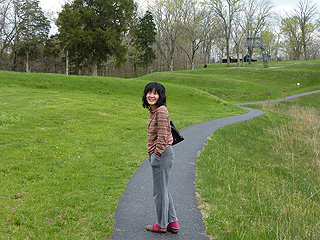 |
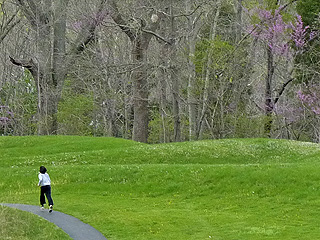 |
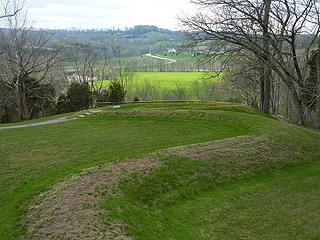 |
|
| Here is Jeri at the famous Serpent Mound in Ohio. |
Arthur running around the ceremonial center of astronomy in prehistoric North America. | Serpent Mound, near the head of the serpent, with a view of the scenery beyond. | |
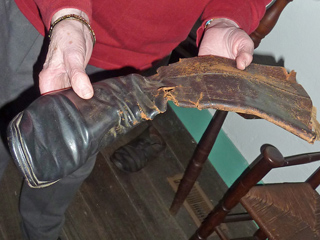 |
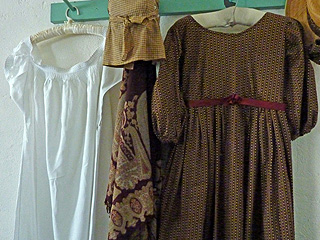 |
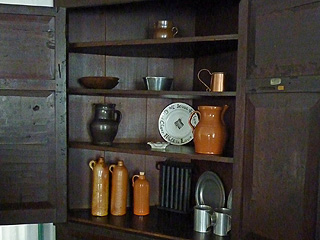 |
|
| When visiting the birthplace of President Grant you can see these shoes made by his father (Jesse Root Grant), who was a tanner, leather-worker, and cobbler. | Some of the clothing belonging to Hannah Simpson Grant (1798-1883) is displayed in the modest home at Grant’s birthplace. | This was some furniture in the home where Grant was born. It's a little-known fact that Grant's father stayed in the home of John Brown's father, and knew John Brown well. | |
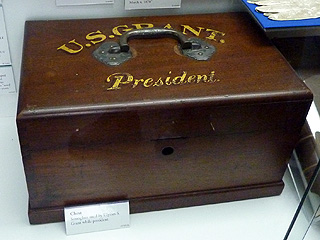 |
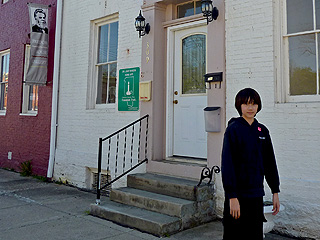 |
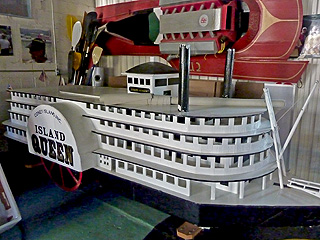 |
|
| The birthplace of President Grant includes a fine small display of interesting artifacts. |
Arthur in front of the home of Dr. John Rogers, the doctor who delivered Ulysses Grant. Dr. Rogers was an active abolitionist, the first president of the Clermont County Anti-Slavery Society. He was part of an armed group of citizens who protected the presses at The Philanthropist Newspaper (the voice of the Ohio Anti-Slavery Society). | Near the historic home of Dr. John Rogers in New Richmond, Ohio we found a workshop were two friendly craftsmen were creating water-going craft out of carboard, glue, tape, and paint. There are races of such cardboard craft on rivers and lakes, and these New Richmond artists attend these races to see how their boats perform, or pilot them by themselves. | |
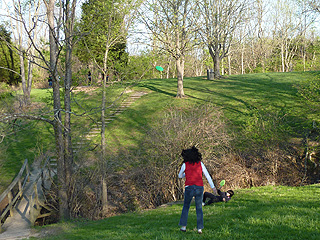 |
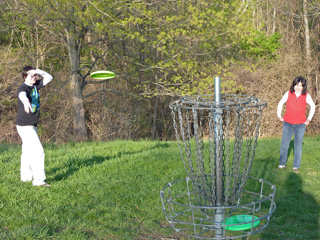 |
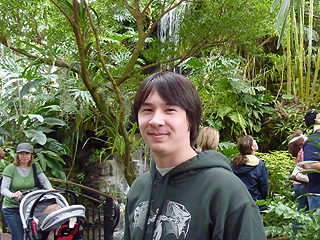 |
|
| We enjoyed a game of disc golf in the Woodland Mound Park on the southeastern side of Greater Cincinnati. | The Woodland Mound disc golf course was quite fun. It was our second family game of disc golf. | In Eden Park (in Cincinnati) we stopped briefly to see the Krohn Conservatory. | |
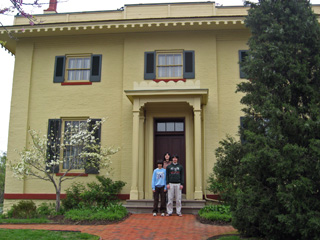 |
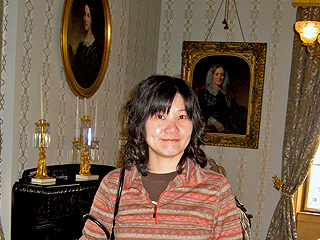 |
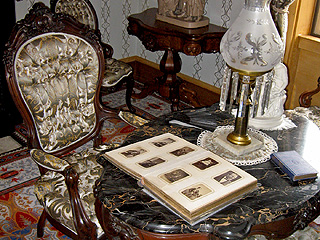 |
|
| In Cincinnati the Harriet Beecher Stowe home was not open, so instead we went to the Taft mansion to learn about William Howard Taft and his family. | Jeri and I enjoy viewing historic homes, but this isn’t so popular with Sebastian and Arthur. Here is Jeri in the Taft home. | An old Taft family photo album was out on a table. Seeing it, I reflected on how the photo album has evolved over the years. | |
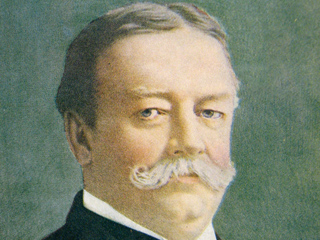 |
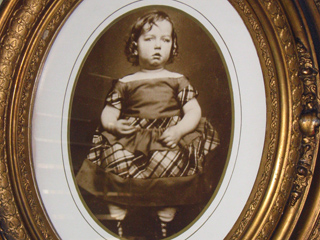 |
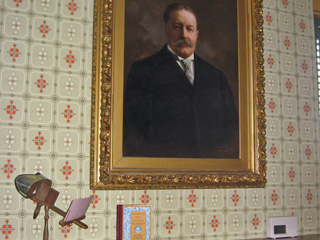 |
|
| In the Taft home there was a display of political memorabilia, including this small portrait of Taft with the slogan, “the people’s desire”. The guide gave us a very lengthy and detailed description of the Taft family and William Howard Taft’s career, but he did not mention Taft’s weight problems. |
This childhood photograph of William Howard Taft was up in the Taft home. Taft was born in 1857. Taft was the second president (after Teddy Roosevelt) to serve as a president after the War of the Rebellion of the Southern Slaveholders who had not served in the Union Army in that conflict. | I think this was a painting of Alphonso Taft, William Howard Taft’s father, who was an attorney and leader of the early Republican Party. Notice the McGuffey’s Reader on the mantle. Harriet Beecher Stowe’s mother Catharine Esther Beecher was an editor of some editions of the McGuffey’s Readers. | |
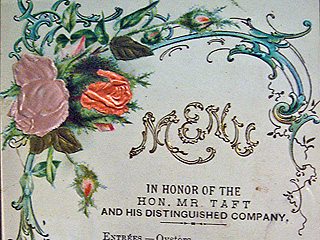 |
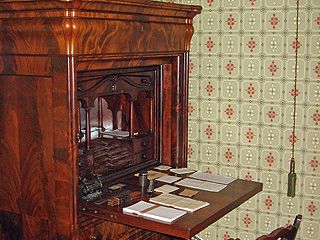 |
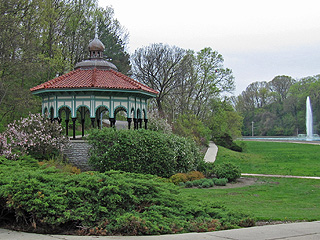 |
|
| I associate Taft with good food, and so here is a photograph of a menu from a 1905 feast, with lovely ornamentation. | This is a desk in the Taft home, and this desk was used by Taft during his career. | This is a view in Eden Park (in Cincinnati) showing the Seasongood Pavillion at Mirror Lake. | |
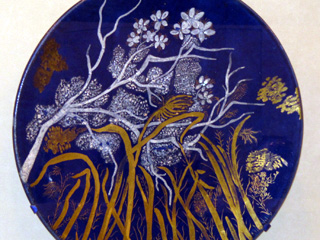 |
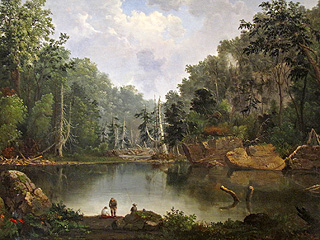 |
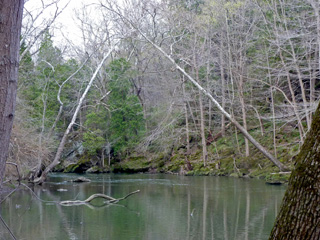 |
|
| I like the style in this 1880 decorative underplate (Charger) from the Frederick Dallas Hamilton Road Pottery. | This is an 1851 landscape by Robert S. Duncanson, a popular African-American Canadian-American painter who lived for many years in Cincinnati. It shows the Blue Hole on the Little Miami River. | This is a photograph I took of the Blue Hole on the Little Miami River in John Bryan State Park in 2011. Compare it to Duncanson’s painting of the scene from 1851. | |
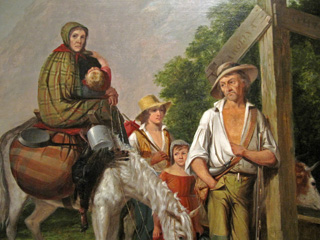 |
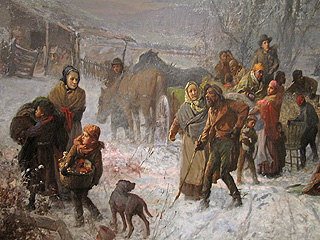 |
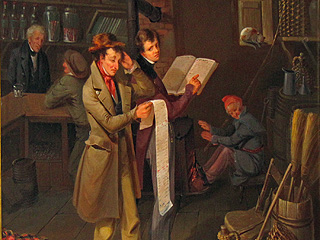 |
|
| This is James Henry Beard’s anti-slavery painting from 1845, North Carolina Emigrants: Poor White Folks. The family represents the free laborers of the south who were displaced by slave industry. It’s difficult to imagine anyone today creating a work of art showing working-class Americans losing their homes after a long stint of unemployment caused by jobs going overseas to labor markets in places like China where workers are not free to organize into worker-controlled labor unions that can strike and negotiate for better wages. |
Just as the nadir of race relations was beginning in the early 1890s, some artists such as Charles T. Webber, continued to show race unity and interacial solidarity. Webber’s painting above, The Underground Railroad (1893), shows some famous abolitionists and activists who were conductors on the underground railroad. That’s Catharine Coffin standing in the center with the elderly gentleman using a walking stick, and her husband Levi Coffin is up high on the cart at the right. The Quaker abolitionist Hannah Haydock is on the far left with the children. | Here is another political painting by the Cincinnati artist James Henry Beard (1811-1893). This painting, from 1840, is called The Long Bill. In it we see a well-dressed shopkeeper pointing at a book and looking with disdain over his shoulder at a customer who is unhappy at the presentation of a bill. Inflation was an issue in the presidential election of 1840, and William Henry Harrison (a westerner, who can be associated with the customer in the painting) blamed the incumbant (Martin Van Buren, represented by the shopkeeper) for the rising prices. | |
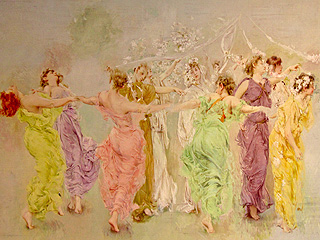 |
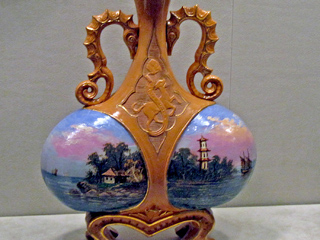 |
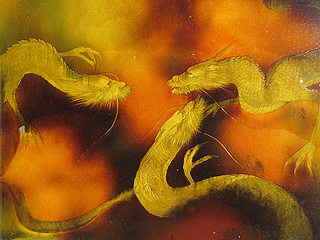 |
|
| This is a study made by Robert Frederick Blum (1857-1903) as he prepared to make the mural Moods to Music, which is now in The Brooklyn Museum. I'd like to read Bruce Weber’s 1985 dissertation on Blum, or get a copy of the 1893 Scribner’s Magazine issues with Blum’s articles about his sojourn in Japan. |
This earthenware vase from 1882-1884 was made in the Matt Morgan Art Pottery. The seahorse handles and the painted scene of islands in the South China sea project an exotic aquatic mood. | The Cincinnati artist who made these three dragons (A Trinity of Dragons—Earth, Fire, and Water, ca. 1892) was Kataro Shirayamadani (a native of Kanazawa, Japan), who worked for the Rookwood Pottery. | |
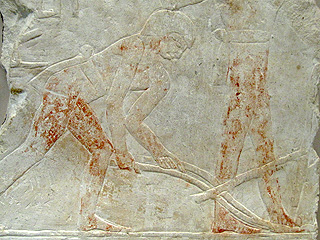 |
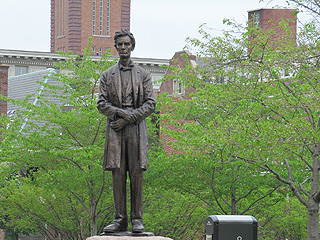 |
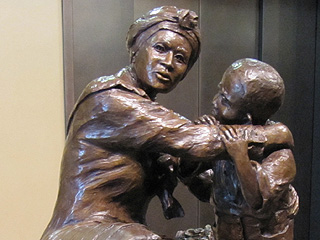 |
|
| Here we have a farmer in Egypt working an ox-drawn plow. The artist(s) who made this relief lived around 2400-2300 BC. They carved this to decorate the Saqqara tomb of Niankhnesut. |
George Grey Barnard created this large statue of Abraham Lincoln, which stands in Lytle Park, Cincinnati. The statue was dedicated in 1917. | This moving statue shows a mother with her son. It’s not clear why they are so agitated. Are they slaves, soon to be split apart by a sale to different owners, or are they escaping, and fearing recapture and punishment? The statue is in the Freedom Center. | |
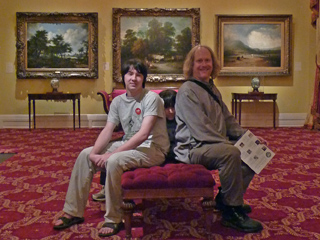 |
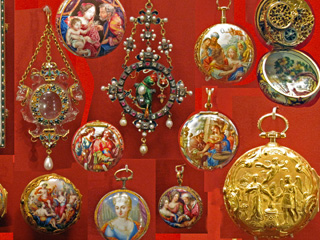 |
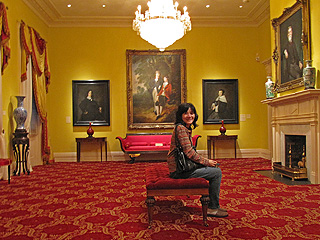 |
|
| Sebastian, Arthur, and Eric in the Taft Museum of Art in Cincinnati. | A mosaic of images from the collection of 17th and 18th century watches in the Taft Museum of Art. | Jeri in the Taft Museum of Art in Cincinnati. | |
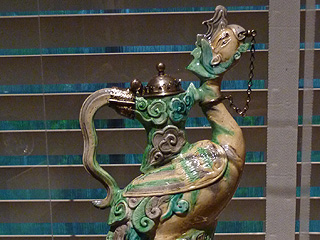 |
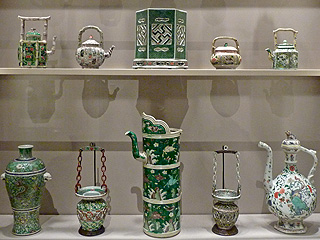 |
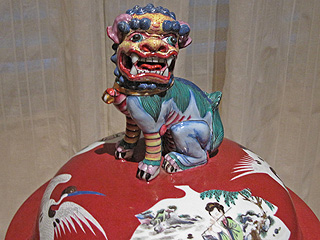 |
|
| The Ming Dynasty Ewer in the Shape of a Phoenix in the Taft Museum of Art. The Chinese artist(s) who made this finished it by 1580, and then Friedrich Hillebrand of Nuremberg made the silver-gilt oval foot mount. | A display case in the Taft Museum of Art showing a fine colletion of Chinese tea pots and porcelain. | A Fu Dog on top of a large Chinese Vase in the Taft Art Museum. |
|
Hadley-Ives homepage. Some photos from Fall of 2010. Sources and diversions.
|
Photographs from 2011
|
|